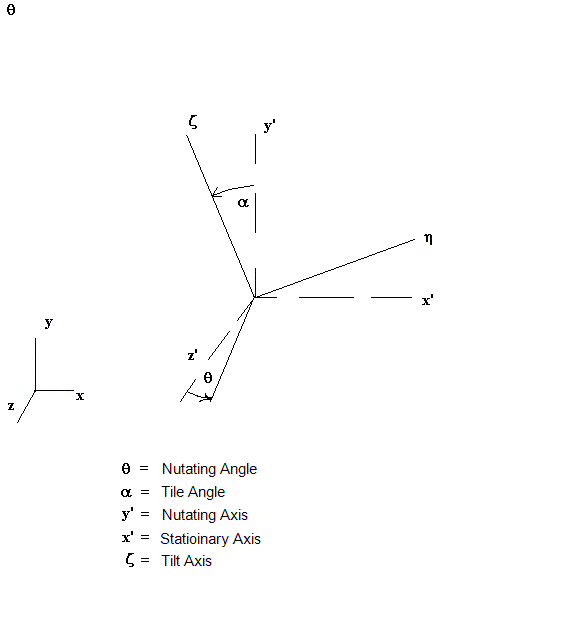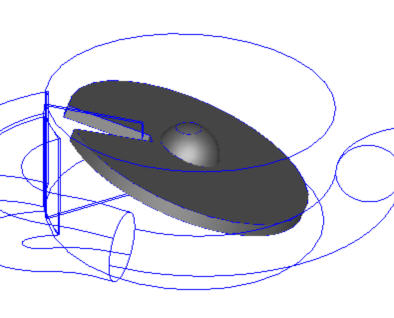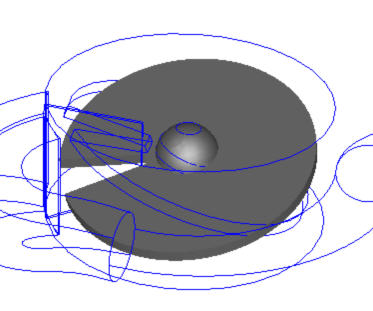Nutation is a type of motion used in several types of liquid flow meters. A nutating object is inclined at an angle to a reference axis. As the normal vector of the object rotates about the reference axis, the angle between the normal vector and the reference axis remains constant. The result is that the object actually wobbles about the reference axis, but does not change angular position relative to it.
A coin wobbling along its edge as it slows from a spin is a good example of nutating motion.

The image above describes nutating motion. The three quantities that are defined through the User Interface are the Tilt Axis, the Axis of Nutation (Nutating Axis), and the Center of Nutation.
The Tilt axis is normal to the disk, and rotates about the Nutating axis through the Nutating Angle. The Nutating Axis is typically a global Cartesian axis, but is not required to be one. The Center of Nutation is typically the center of the disk. This point is often constructed at the origin or some other easily defined point. The other quantities shown in the graphic above are determined automatically, and do not require explicit definition.
The series of images below show a nutating disk. The disk wobbles about its axis, but it does not actually rotate. The angular position of the slot in the disk does not change throughout the nutation:

|

|

|